Most modern cars provide good reliability over tens of thousands of kilometres provided their servicing is kept up to date, they’re not driven abusively, and they get some basic checks in between.
But there are some bad driving habits you should also break to save your car from an early retirement.
Here are 14 habits to avoid to help get the most from your car.
1. Shifting from drive to reverse while still moving forward (and vice versa)
Doing this gives your car some very mixed messages. Given the forces involved in trying to make a car’s major mechanical parts turn in the opposite direction to which the car is travelling, it’s poor practice to do this with any vehicle. In older automatic vehicles, engaging reverse while the car is still going forward (at any speed) could damage the transmission and is potentially dangerous.
In manual transmission cars, attempting to select reverse while the car’s moving forward will either cause a crunching sound or the gearbox will have a lock out mechanism which prevents reverse from being selected. Just use the brakes, come to a complete stop, then select the appropriate gear to change direction.
2. Washing your car with dishwashing liquid
Dishwashing detergent may seem like a simple at-home solution for washing a dirty car, however it’s designed to cut through thick grease, and those harsh chemicals can damage your vehicle’s paintwork. It can strip away the paint’s protective coatings and expose the clear coat to damage. Use dedicated car wash liquid instead, which will keep your car looking better for longer. It’s available from auto stores and supermarkets and is relatively inexpensive.
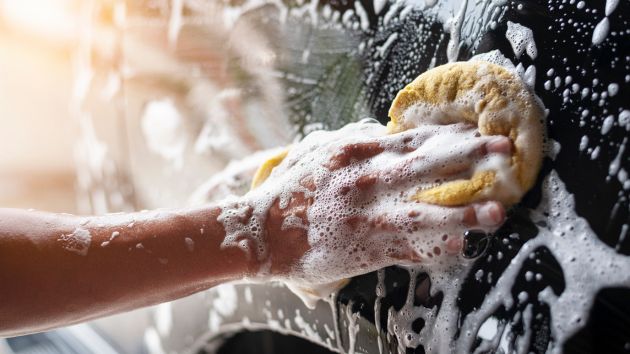
3. Idling for too long
While most cars appear to idle comfortably for long periods of time, it may be impacting your car's battery health. Sitting in the car with your engine running forces it to work harder to keep cool, particularly if your air conditioner is on as well. When the engine is running at a lower speed than when driving, the alternator may not be delivering enough energy to the battery, which could eventually lead to a low battery charge.
4. Hitting kerbs
Damage to your car wheels is the most common problem with hitting kerbs, but it can also knock the wheels out of alignment. A clear sign your wheels have been knocked out of alignment is when you’re driving straight but the steering wheel isn’t.
Regularly driving with your wheels out of alignment can also increase wear and tear on your tyres and cause vibration. In some cases, it can even cause damage to the underside of your vehicle. If this has happened to your car, to reduce the likelihood of damage, ensure a wheel realignment is included in your regular car service and check your tyres are inflated to the correct pressures.
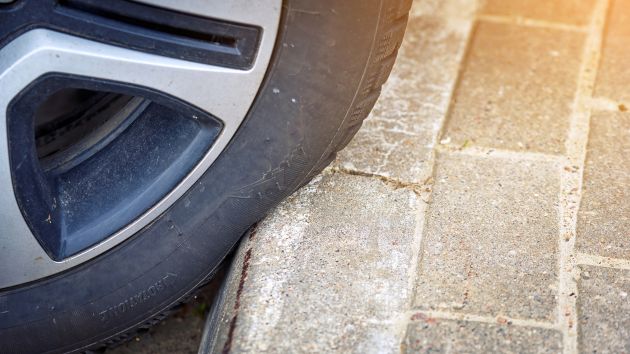
5. Running your car with a low amount of fuel in the tank
Regularly running your car’s fuel tank to very low is not a good idea for several reasons. Firstly, the fuel pumps in some modern cars are inside the fuel tank and they’re designed to be cooled and lubricated by the fuel in the tank. Running your tank down to almost completely empty could damage your car’s fuel pump over time. In older cars with steel fuel tanks, regularly running them low may increase the potential for condensation to cause corrosion.
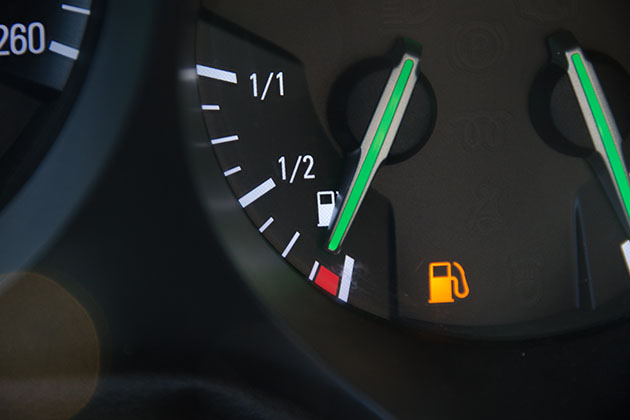
6. Too much hard braking
Unless you’re going down a very steep hill, regularly using the brakes hard is a sign you’re either accelerating too hard or not paying enough attention to traffic or both. While the brakes on modern cars perform incredibly well when properly maintained, they will wear more quickly when used heavily.
Smooth acceleration and braking will not only make your brakes last longer, it will encourage you to save fuel and keep you and other road users safer. Also, braking and accelerating heavily and sharp steering movements are used by some high-tech cars to signify a driver is suffering fatigue.

7. Incorrect tyre pressure
Previous surveys conducted by RAC found that more than one quarter of the cars on our roads could have tyre pressures that are incorrect by 10psi or more, while a UK survey has shown 62 per cent of cars had the wrong pressures by any margin. A car’s only contact with the road are the tyres. If they’re under-inflated or over-inflated they can’t do their job properly. Keeping your tyres at the right pressure will help you save fuel, make your car handle better and most importantly, keep you safer.
To find the correct tyre pressures for your car, you should refer to the vehicle’s tyre placard, which can usually be found on the glove box lid, fuel filler flap or on the driver’s door or opening. This placard, usually a square white sticker, will display recommended tyre inflation pressures as well as the size of the wheels and tyres originally fitted to the car, and the tyres’ speed and load ratings. The information is also in the owner’s handbook.

8. Driving too fast over speed humps
Speed bumps are designed to slow you down. Driving too fast over them is dangerous and sends an uncomfortable shock through the car. Doing it regularly accelerates wear of the car’s suspension components such as shock absorbers, rubber bushings and ball joints. It also has the potential to throw the car’s wheel alignment out of adjustment. Speed bumps are there for a reason and going over them too fast raises the risks to you, your car and other road users.
9. Descending a hill in neutral
Strictly speaking, this won’t damage your car, but what happens while coasting down a hill in neutral does have its pitfalls. In some modern cars you’ll use more fuel descending a hill in neutral than if descending a hill with a gear engaged on a trailing throttle. If no fuel is needed to keep the engine turning (such as when going downhill with a gear engaged), some cars can shut off the fuel supply.
So, descending a hill in neutral usually uses slightly more fuel. Selecting neutral when descending a hill also means you can only control your car by braking, which means less control to adjust your speed or even to avoid a crash. Never turn off the ignition while the car is moving.
10. Missing car services
In the long term, regularly servicing your vehicle according to the car manufacturer’s schedule is the best way to get the most out of it for minimal cost. Doing this will maximise the car’s durability and minimise the chances of an unexpected repair bill.
This doesn’t mean you have to take your car back to the dealer to maintain its warranty. You just need to have it serviced by a qualified person to the manufacturer’s schedule. This could save you money, while giving you peace of mind that the car’s servicing is up to date. Safety and other mechanical checks are also part of a service.
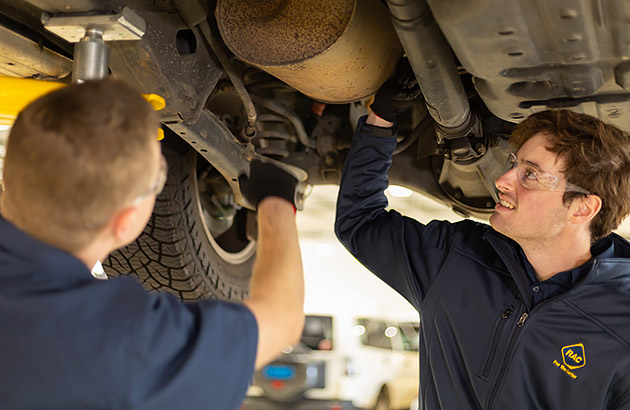
11. Revving your engine while it's still cold
Revving your car’s engine when it’s not properly warmed up will cause unnecessary engine wear and burn fuel needlessly. While modern cars are designed to be driven immediately after a cold start, they also shouldn’t be revved excessively when cold.
Immediately after a cold start, your car’s engine oil is yet to reach its operating temperature, and the oil is also yet to reach its optimal circulation. Just start the engine, and let it settle to a fast idle before you drive away.
12. Not driving your car at all
Cars are designed to be driven regularly. Regular driving warms up the engine oil and coolant, the brakes and the exhaust system, which delays deterioration and helps water to evaporate from areas where it shouldn’t be. Regular driving also keeps your battery in good condition. Tyres can become misshapen if the car rests on them without moving for extended periods.
Cars don’t like running on old fuel either, so keeping fresh fuel moving through your car will help avoid difficult starts and thick deposits clogging the fuel system, as well as reduce the chances of water getting into the fuel which can cause corrosion.
13. Fast charging your EV
It may be the most efficient form of charging, however fast-charging your EV regularly can slightly reduce battery life, compared to slow charging. According to Kia, eight years of standard charging provides 10 per cent more battery life compared to eight years of fast charging. So if you’re planning to own your EV for a a long time, slow charging might help squeeze more out of its battery.
RELATED: How long do electric car batteries last? »
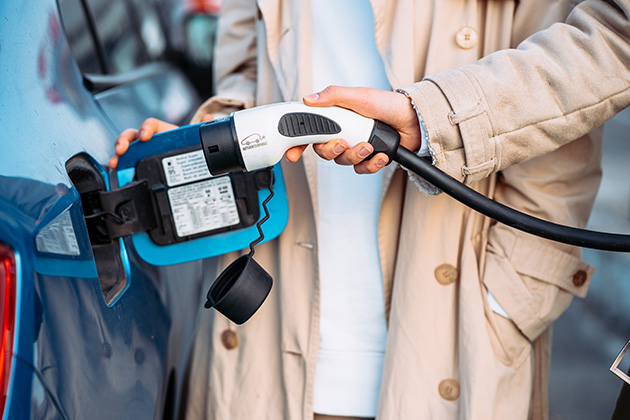
14. The clutch isn't a footrest
Manual transmission cars are becoming less common as automatics take over, but if you still drive a manual it’s worth paying attention to what your feet are doing. Drivers prematurely wear out the clutch when they rest their foot on the clutch pedal while driving. This partially disengages the clutch and allows the flywheel on the end of the engine to rub against the clutch’s friction material without fully engaging with it.
Excessively slipping the clutch, such as partially engaging it to keep the car stationary on a hill, will also get the clutch to the end of its life much earlier.
RELATED:
How to maintain your car when it's not in use »
Some of these sound familiar?
Don't forget RAC members get one free 30 minute fault diagnosis at our Auto Service Centres each year.
Last updated May 2024
